|
|
|
Sort Order |
|
|
|
Items / Page
|
|
|
|
|
|
|
| Srl | Item |
| 1 |
ID:
105798
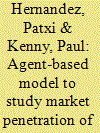

|
|
|
|
|
| Publication |
2011.
|
| Summary/Abstract |
A spatially explicit agent-based vehicle consumer choice model is developed to explore sensitivities and nonlinear interactions between various potential influences on plug-in hybrid vehicle (PHEV) market penetration. The model accounts for spatial and social effects (including threshold effects, homophily, and conformity) and media influences. Preliminary simulations demonstrate how such a model could be used to identify nonlinear interactions among potential leverage points, inform policies affecting PHEV market penetration, and help identify future data collection necessary to more accurately model the system. We examine sensitivity of the model to gasoline prices, to accuracy in estimation of fuel costs, to agent willingness to adopt the PHEV technology, to PHEV purchase price and rebates, to PHEV battery range, and to heuristic values related to gasoline usage. Our simulations indicate that PHEV market penetration could be enhanced significantly by providing consumers with ready estimates of expected lifetime fuel costs associated with different vehicles (e.g., on vehicle stickers), and that increases in gasoline prices could nonlinearly magnify the impact on fleet efficiency. We also infer that a potential synergy from a gasoline tax with proceeds is used to fund research into longer-range lower-cost PHEV batteries.
|
|
|
|
|
|
|
|
|
|
|
|
|
|
|
|
| 2 |
ID:
149986
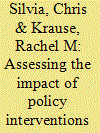

|
|
|
|
|
| Summary/Abstract |
Heightened concern regarding climate change and energy independence has increased interest in plug-in electric vehicles as one means to address these challenges and governments at all levels have considered policy interventions to encourage their adoption. This paper develops an agent-based model that simulates the introduction of four policy scenarios aimed at promoting electric vehicle adoption in an urban community and compares them against a baseline. These scenarios include reducing vehicle purchase price via subsidies, expanding the local public charging network, increasing the number and visibility of fully battery electric vehicles (BEVs) on the roadway through government fleet purchases, and a hybrid mix of these three approaches. The results point to the effectiveness of policy options that increased awareness of BEV technology. Specifically, the hybrid policy alternative was the most successful in encouraging BEV adoption. This policy increases the visibility and familiarity of BEV technology in the community and may help counter the idea that BEVs are not a viable alternative to gasoline-powered vehicles.
|
|
|
|
|
|
|
|
|
|
|
|
|
|
|
|
| 3 |
ID:
097597
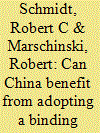

|
|
|
|
|
| Publication |
2010.
|
| Summary/Abstract |
In the run-up to the Copenhagen climate summit, the USA announced an emissions reduction target of 17% by 2020 (relative to 2005), and the EU of 20-30% (relative to 1990). For the same time horizon, China offered to reduce the CO2-intensity of its economy by 40-45% (relative to 2005), but rejects a legally binding commitment. We use the targets announced by the EU and the USA to analyze the potential gain for China if it were to adopt a binding emissions target and join an international emissions trading scheme. We show that China would likely benefit from choosing a binding target well below its projected baseline emissions for 2020.
|
|
|
|
|
|
|
|
|
|
|
|
|
|
|
|
| 4 |
ID:
097598
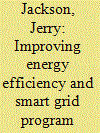

|
|
|
|
|
| Publication |
2010.
|
| Summary/Abstract |
Electric utilities and regulators face difficult challenges evaluating new energy efficiency and smart grid programs prompted, in large part, by recent state and federal mandates and financial incentives. It is increasingly difficult to separate electricity use impacts of individual utility programs from the impacts of increasingly stringent appliance and building efficiency standards, increasing electricity prices, appliance manufacturer efficiency improvements, energy program interactions and other factors. This study reviews traditional approaches used to evaluate electric utility energy efficiency and smart-grid programs and presents an agent-based end-use modeling approach that resolves many of the shortcomings of traditional approaches. Data for a representative sample of utility customers in a Midwestern US utility are used to evaluate energy efficiency and smart grid program targets over a fifteen-year horizon. Model analysis indicates that a combination of the two least stringent efficiency and smart grid program scenarios provides peak hour reductions one-third greater than the most stringent smart grid program suggesting that reductions in peak demand requirements are more feasible when both efficiency and smart grid programs are considered together. Suggestions on transitioning from traditional end-use models to agent-based end-use models are provided.
|
|
|
|
|
|
|
|
|
|
|
|
|
|
|
|
| 5 |
ID:
186479
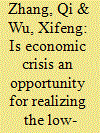

|
|
|
|
|
| Summary/Abstract |
The COVID-19 and the resulting financial crisis have led researchers to focus on the impact of the exogenous shock on the economy and the effectiveness of energy policy for a low-carbon transition. However, measuring this impact sophistically is notoriously fraught with difficulties. In this research, we build a combined agent-based economy–energy model to capture the change in the effectiveness of energy policy in response to an economic crisis. Simulation results show that the government can achieve its low-carbon transition development target using the regulation in the energy market, such as the emissions trading scheme policy. However, this regulation in the energy market will negatively affect the economy, and this adverse effect becomes more severe with either higher energy consumption or a lower energy capacity. Nevertheless, introducing the policy with appropriate timing, typically in the recovery phase of an economic crisis, can effectively reduce the negative impact of government regulation. Finally, some policy implications are proposed for different situations of countries and to reduce the negative effects of energy regulation policy.
|
|
|
|
|
|
|
|
|
|
|
|
|
|
|
|
| 6 |
ID:
191279
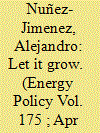

|
|
|
|
|
| Summary/Abstract |
Decarbonizing urban energy consumption is critical for addressing climate change, yet renewable power installations in cities are rare due to limited space and economic unattractiveness. Community solar, where multiple electricity users share the electricity generated by their rooftop PV systems, could help overcome these barriers and accelerate PV adoption in cities. Using an agent-based model, we simulated the decision-making of nearly 5000 building owners in a city district in Zurich, Switzerland, and assessed three locally relevant policy scenarios: no community solar, community solar with adjacent buildings, and community solar with buildings within a 100-meter radius. The results show that allowing community solar with adjacent buildings increases the installed PV capacity in 2035 by 1%, as greater economies of scale and higher self-consumption make PV adoption more economically attractive. A more permissive policy, allowing community solar with buildings within a 100-meter radius, provides more opportunities to communities to grow over time and results in 21% more PV installed capacity in 2035 than without community solar. These findings demonstrate the potential of community solar to accelerate PV adoption in cities and underscore the significant role of policy design in achieving this goal.
|
|
|
|
|
|
|
|
|
|
|
|
|
|
|
|
| 7 |
ID:
163549
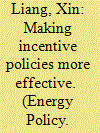

|
|
|
|
|
| Summary/Abstract |
The building sector is responsible for a major share of energy consumption, with the most energy being consumed during the operation stage of buildings. Energy-efficiency retrofit (EER) policies have been promoted by numerous countries. However, the effectiveness of these incentive policies has been insufficient, a main reason being the agency problem between the government and building owners. In addition, most policies ignored the diversity of buildings and building owners, resulting in a lack of reaction from owners. To address this problem, this study proposed an agent-based model for policy making on EER. The model defined the government and owners as agents and their decision-making behaviors were modeled with principal-agent theory. A platform based on the proposed model was then developed and the incentive policy was optimized under different circumstances. To verify the effectiveness of the proposed model, three policy scenarios were compared on the platform, which are the policy by the proposed model, the incentive policy in Shanghai and Shenzhen, China. The results showed that the incentive policy based on the proposed model has the best performance on energy savings, returns on investment, and leverage effects. A sensitivity analysis indicated that the government should pay more attention to energy price.
|
|
|
|
|
|
|
|
|
|
|
|
|
|
|
|
| 8 |
ID:
080822


|
|
|
|
|
| Publication |
2008.
|
| Summary/Abstract |
Following Axelrod's tournaments for strategies in the repeat-play prisoner's dilemma, we ran a ``tournament of party decision rules'' in a dynamic agent-based model of party competition. We asked researchers to submit rules for selecting party positions in a two-dimensional policy space, pitting each rule against all others in a suite of long-running simulations. The most successful rule combined a number of striking features: satisficing rather than maximizing in the short run, being ``parasitic'' on choices made by successful rules, and being hardwired not to attack other agents using the same rule. In a second suite of simulations in a more evolutionary setting in which the selection probability of a rule was a function of the previous success of agents using the same rule, the rule winning the original tournament pulled even further ahead of the competition
|
|
|
|
|
|
|
|
|
|
|
|
|
|
|
|
| 9 |
ID:
132608


|
|
|
|
|
| Publication |
2014.
|
| Summary/Abstract |
Using an agent-based modeling approach we study the temporal dynamics of consumer opinions regarding switching to dynamic electricity tariffs and the actual decisions to switch. We assume that the decision to switch is based on the unanimity of ? past opinions. The resulting model offers a hypothetical, yet plausible explanation of why there is such a big discrepancy between consumer opinions, as measured by market surveys, and the actual participation in pilot programs and the adoption of dynamic tariffs. We argue that due to the high indifference level in today×s retail electricity markets, customer opinions are very unstable and change frequently. The conducted simulation study shows that reducing the indifference level can result in narrowing the intention-behavior gap. A similar effect can be achieved by decreasing the decision time that a consumer takes to make a decision.
|
|
|
|
|
|
|
|
|
|
|
|
|
|
|
|
| 10 |
ID:
177148
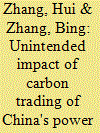

|
|
|
|
|
| Summary/Abstract |
Carbon trading is considered a strategy for reallocating carbon permits and reducing abatement costs that may also change energy consumption and the distribution of atmospheric pollution emissions, resulting in environmental health benefits or damage on a regional scale. In this research, we use an agent-based model to construct a national carbon emissions trading market of the power sector based on the year of 2013, and simulate the key atmospheric pollution emission patterns and the corresponding environmental health effects. We find that compared with a command and control policy, the carbon trading policy is able to reduce the CO2 emissions and save abatement costs by approximately 63.53 RMB/ton. Meanwhile, the results show the carbon trading policy would synergistically reduce PM2.5 emissions by 1.55 million tons. Addition, we use a simplified exposure-response model to estimate health benefits by synergistically reducing PM2.5 emissions, and find that the carbon trading policy would decrease 45,200 cases of all-cause mortality and generate 307.07 billion RMB in environmental health benefits. The co-benefit accounts for 0.52% of the nation's gross domestic product (GDP) in 2013. However, compared with the command and control policy, carbon trading changes the pollution emission distribution among the different provinces, and results in unintended environmental health damages in some provinces. Setting reasonable trading directions and exchange ratios, increasing stringency of environmental regulations in some provinces with worsening air pollution should be implemented to complement the carbon trading policy.
|
|
|
|
|
|
|
|
|
|
|
|
|
|
|
|
|
|
|
|
|